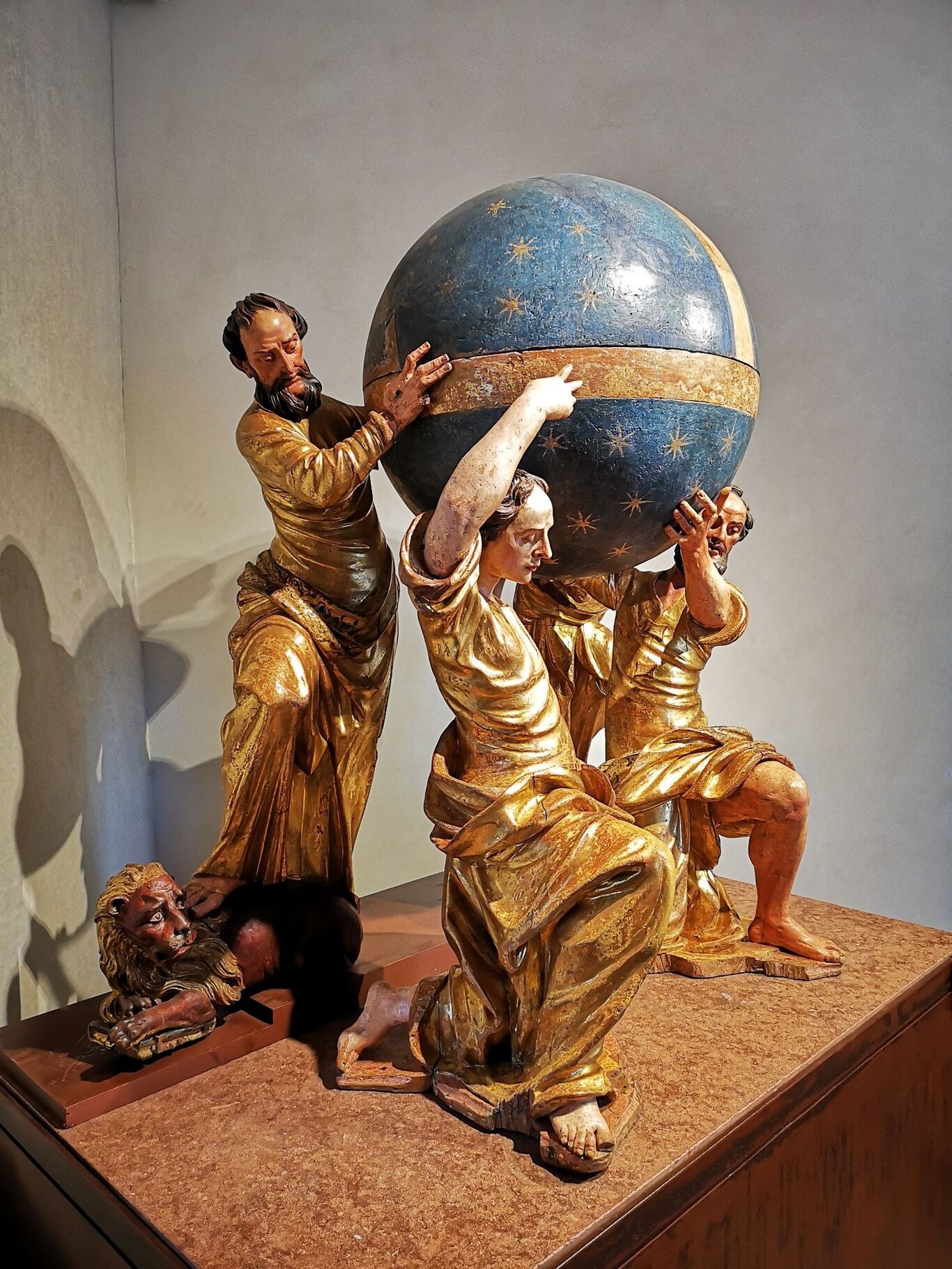The area on the right bank of the Piave River, with its many villages and hamlets, has plenty of small and large religious buildings.
The itinerary suggested will take you to just a few of the more than 90 churches and chapels, and starts in Cesiomaggiore. The building, dedicated to Santa Maria Maggiore, retains inside the harmonious proportions of the Neoclassical style, without sacrificing decorative inserts of a Rococo matrix. Inside you can see St Peter of Alcantara, characterized by the dark chromaticism typical of Tenebrism, an impressive late Baroque tabernacle, flanked by statues of St John of Nepomuk and St Joseph, carved in soft stone by Giuseppe Sordina of Vicenza, and a sculptural group with the Madonna and Child by Valentino Panciera Besarel.
The next place to stop is in Pez where you will be captivated by the oratory of the Visitation — “La Madonnetta” with its peculiar octagonal shape. Upon entering, notice the iconographic program by Agostino Ridolfi and the large “portal” altar flanked by statues of St Victor and St Catherine.
The next stop is the church of San Lorenzo in Pullir in the municipality of Cesiomaggiore. In this religious building, the late fifteenth-century fresco behind the high altar should draw your attention. Configured as a kind of virtual triptych altar, the painted faux architectures simulate the structure of the curtain. Inside, an enthroned Madonna and Baby Jesus is flanked by St Lawrence, as well and St Victor. In the tympanum is the image of Jesus Christ deposed from the cross supported by two angels.
Continue to Santa Giustina to see the Church of Santa Giustina. To draw your attention, in addition to the majestic temple-like tabernacle in polychrome marble, there is the Annunciation by Carlo Saraceni. In this painting on canvas, believed to be one of the artist’s masterpieces still in Belluno province, the Venetian artist combined Caravaggio’s Tenebrist style with Venetian colour painting.
In Bivai, where a medieval castle belonging to the Teuponi family once stood, linger in the church of Sant’Antonio Abate. Although the 1942 fire destroyed the wooden furniture, paintings and damaged the frescoes inside, you can appreciate its architectural structure. The slender profile and groin vaults suggest a foundation of aristocratic origin.
Continue your itinerary to San Gregorio nelle Alpi. Here, enclosed in the gilded and polychrome altar attributed to Giovanni Auregne, admire the altarpiece depicting the Madonna and Child between St Gregory and St Valentine. Long attributed to Titian for its beauty, it is now assigned to the catalogue of Alessandro Bonvicino, known as Moretto. The artist immersed the 4 figures, among which the face of the Madonna stands out almost hypnotic in its soothing beauty, against a landscape backdrop imbued with a soft, enveloping luminosity.
Also in San Gregorio, go to the place called Fumach, an ancient settlement where several archaeological finds have been unearthed.
Entering the Church of San Bartolomeo, you will be surprised by the beauty of the cycle of frescoes covering every wall of the building. The ups and downs of the apostle Bartholomew are narrated here, as a true Biblia Pauperum, making church doctrine accessible to all believers through images.
Next, head toward Sedico in the hamlet of Villa Brosa in Bribano to see the Oratory of San Nicolò. As you step inside, the small building reveals the 3 precious panel paintings enclosed in the curtain carved by Feltre master Vittore Scienza. It is the Madonna and Child, St Nicholas and St Roch attributed to Giovanni Agostino da Lodi who, successfully put into practice the suggestions of Leonardo’s artistic style.
In the centre of Sedico, look inside the Church of Santa Maria Annunziata. Here, the Madonna and Child with Angels attributed to Francesco Vecellio stands out. The painting will enchant you with its sweetness and the painter’s colour painting skill. For a long time, this altarpiece exerted a decisive influence on local painting, especially on Giovanni Da Mel.
In the municipality of Sospirolo, go to the hamlet of Oregne to see the Church of San Tiziano where you can see inside a beautiful cycle of late 15th-century frescoes by various artists.
To conclude your route, head to the Church of San Gottardo. Along the way, stop and linger near the Carthusian monastery of Vedana. Unfortunately, you cannot see the inside of the magnificent architectural complex, but it deserves to be seen at least from the outside. To admire its works of art, go to the Diocesan Museum of Feltre.
On a rise at the mouth of the Valle del Cordevole is the small sanctuary of San Gottardo which, with the adjoining hospice, welcomed wayfarers and pilgrims from all over Europe. The most outstanding of the works inside is the altarpiece depicting the Virgin in Glory, St Gotthard, St Bruno, and the commissioning noblewoman, Diana Grini.
